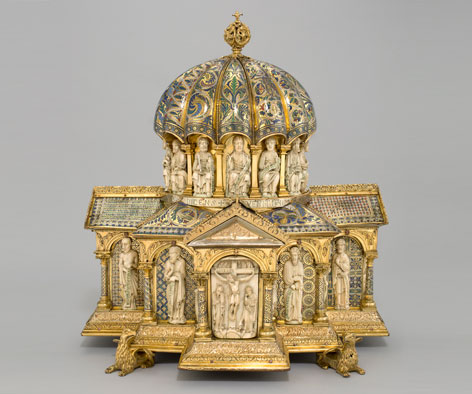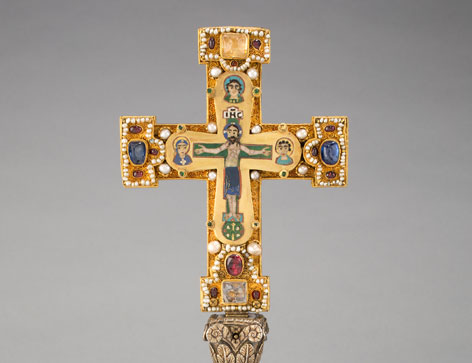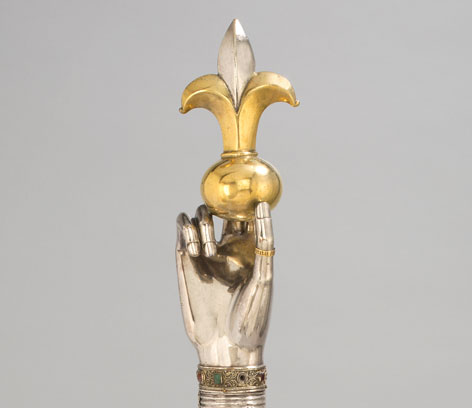The U.S. Supreme Court has rejected the claims of Jewish heirs who sought to sue Germany for taking property from its own citizens. The court cited the 1976 Foreign Sovereign Immunities Act (FSIA) for the basis of its unanimous ruling. While the FSIA allows lawsuits to be brought for property taken in violation of international law, it does not cover expropriations of property belonging to a country’s own nationals. The court did not consider an alternative argument that suggested the owners were no longer German nationals in 1935. Many Jewish people lost their rights as citizens during the time of the Holocaust and were therefore determined as “non-citizens” in Germany.
The case centers around the medieval Guelph Treasure, which includes 82 artifacts in total and is estimated to be worth around $345 million. The silver came to the attention of Hermann Goering, Adolf Hitler’s second in command. In 1935 Goering allegedly threatened the consortium of Jewish art dealers who owned 42 of the artifacts to sell them for substantially less than they were worth. The Guelph Treasure is presently displayed at the Kunstgewerbemuseum in Berlin.
The Most Important Items of the Treasure
The Guelph Treasure contains many outstanding objects, including magnificent crosses, reliquaries, and portable altars. Some of the best-known works are described below.
The Cupola Reliquary
The Cupola Reliquary, glowing golden and standing almost half a meter high, is the most important piece of the Guelph Treasure. Its form is reminiscent of a Byzantine cross-in-square church and it is richly ornamented. The reliefs on the ends beneath the pediments show the Holy Family, the journey of the Magi, the Crucifixion, and the women at the tomb. Under the other arcades are figures of the prophets. The Apostles are enthroned at Christ’s side on the drum of the dome. The inscription at the base of the drum contains the beginning of the Confession of Peter (Mt 16,13-16, “When Jesus came into the coasts of Caesarea Philippi, he asked his disciples”). In 1482, the cupola reliquary held the relic of the skull of St. Gregory of Nazianzus. The lack of any images or inscriptions pointing to its use as a reliquary, as well as other factors, have recently led experts to conclude that the piece was originally intended as a tabernacle for keeping sacramental bread.


The Guelph Cross
The Guelph Cross is an uncommonly exquisite reliquary cross. It is one of the chief works of art in the Guelph Treasure. Behind a square piece of rock crystal at the foot of the cross, it contains a fragment of the True Cross. According to the engravings in niello on the back, it also contains relics of St. Peter, St. Mark, St. John the Baptist, and St. Sebastian. The cross is decorated with extremely fine filigree work. An enkolpion, originally used as a pectoral cross, is attached to the front. It shows Byzantine influence and is presumably significantly older than the other parts of the cross. On its front are Christ on the cross, portraits of Mary and John the Evangelist to the left and right, and (most likely) the archangel Michael above. The base of the cross adopts Classical elements that impressively emphasise the role of the Guelph Cross as a repository of relics.

The Portable Altar of Eilbertus
The Guelph Treasure includes the largest number of medieval portable altars to survive in a single church treasure. They include, to name just a few, the Portable Altar of Eilbertus, the Portable Altar with the Cardinal Virtues, and the Portable Altar with the Rock Crystal Columns. The Eilbertus portable altar is a major work of Romanesque treasury art and is named after its creator, the Cologne goldsmith Eilbertus. Exhibiting exceptional technical skill and great artistic maturity, it exploits the possibilities offered by a variety of copper enameling techniques in order to execute a complex theological iconography. Figures of the prophets appear on the sides, placed between columns, along with their prophecies. They act as Old Testament supports for the altar. Each end of the mensa (the top panel), left and right, bears four plaques depicting scenes from the lives of Mary and Christ . Representations of the twelve Apostles holding scrolls with text surround the altar stone of rock crystal. Visible beneath the rock crystal is a miniature painting of Christ as Judge of the World, along with the symbols of the four Evangelists.
The Arm Reliquary of Saint Sigismund
The Arm Reliquary of Saint Sigismund is among the oldest surviving examples of a common type of reliquary called a “talking” reliquary. According to an inscription carved into the underside of the base (which was not inscribed before around 1300), it holds relics of St. Sigismund, King of the Burgundians (d. 524). The arm reliquary stands on a square base which rests on lions' paws and features a chased design of foliage on its top. The sleeves and hand were originally made of chased rolled silver. In the late 13th or early 14th century, the hand was replaced by one of cast bronze. In three fingers, it holds an orb surmounted by a fleur-de-lis. This was seen to be a shortened representation of a lily-crowned scepter. When the hand was replaced, the sleeve was made narrower, causing this arm reliquary to have unusually slender proportions. The thumb ring with the inscription “ciismundus” (Sigismund) in Gothic minuscule script was presumably added at some time afterwards.


















